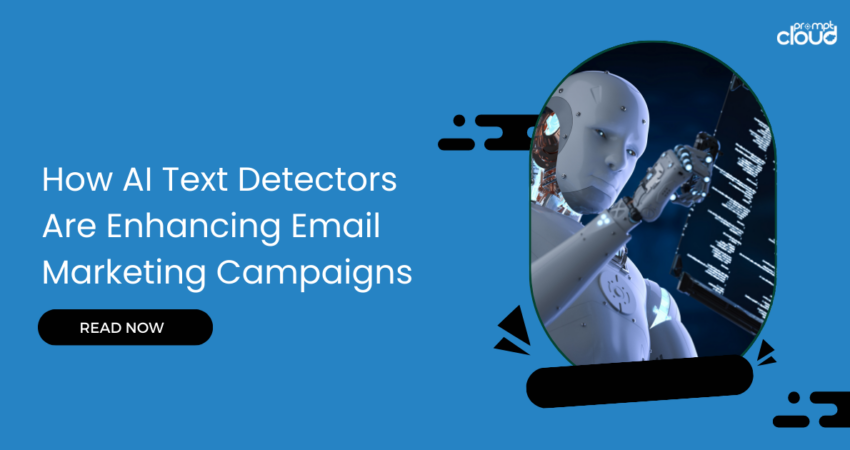
Among the most successful digital marketing tools still is email marketing. Email is used by about 4,4 billion individuals globally; 361.6 billion emails are sent and received daily in 2024 Marketers are looking for ways to make their messages stand out and at the same time, comply with spam regulations when their email inboxes are overflowing with messages.
Modern identification of message content and style made possible by artificial intelligence (AI) text analysis technologies helps email marketers increase deliverability and response rates. Understanding the capabilities of increasingly advanced AI detectors helps one to use them to improve email marketing.
Spam Filters Block Unsolicited Emails
The most recent studies estimate that spam costs companies over $20 billion yearly in lost productivity. Email companies like Gmail use artificial intelligence filters examining message content and context to identify and separate unwanted communications in order to fight invading spam.
Sensitive to preventing authorized communication, providers typically hide filter details. Still, a close examination of message relevancy, source credibility, and content similarity helps sort spam.
For email marketers, messages flagged as spam mean losing the ability to reach and engage subscribers. AI detectors bring both challenges and opportunities to cut through noise while optimizing email deliverability. They work similarly to the AI detector by Smodin or another company, only automatically immediately in the mail and not through manual input.
AI Text Analysis Detects Message Relevance
AI applications utilize natural language processing (NLP) to interpret text meaning and sentiment. Advances in machine learning improve AI’s contextual comprehension capabilities.
For email filters, NLP aids in assessing message relevance to subscribers by evaluating content elements like:
Topic Modeling. Identifying topics by detecting clusters of related words and phrases to determine semantic meaning.
Sentiment Analysis. Signal spam and phishing attempts as potential from subjective opinions and emotional tone detection.
Text Classification. Dividing message purposes according to the content patterns.
Named Entity Recognition. Alerting emails that use brands and business names without permission.
Leveraging similar NLP techniques allows for optimizing emails for relevance. Evaluating message topics, sentiment polarity, communication style and brand name usage improves contextually engaging subscribers.
Evaluating Source Authority Reduces Spam Risk
Along with message relevance, AI detectors analyze sender authority and trustworthiness. Factors like:
- IP Reputation. Blacklisted IPs hint spam or scam risks from disreputable sources.
- Domain History. Newly created or expired domains often indicate phishing attempts.
- Authentication Protocols. SPF, DKIM and DMARC all confirm domain ownership and authorization.
- Engagement Metrics. Disengaged audiences are indicated by low open, click and conversion rates.
- Complaint Reports. Messages are labeled as spam for future feedback, and that affects filter decisions.
Monitoring domains and sending infrastructure reputations allow for the optimization of authority signals. While some factors depend on subscriber actions, maintaining authentication protocols and engagement history improves deliverability.
Duplicate Content Triggers Spam Suspicions
Even relevant messages from trusted sources get flagged if content seems suspiciously duplicated. AI detectors check for:
Repetitive Phrasing. Overusing similar long-form sentences or short key phrases hints at template spam.
Copied Passages. Directly reusing content without attribution suggests auto-generated content.
Overlapping Keywords. Identical keyword placement style across messages indicates possible spam networks.
Advanced AI goes beyond surface-level similarities to detect nuanced content patterns. Generating original analysis and commentary on topics using varied vocabulary bypasses over-optimization penalties.
Leveraging AI Opens Email Marketing Possibilities
Instead of seeing AI text analysis as a hindrance, smart email marketers are awakening to the rise of new capabilities that allow for more ethical engagement of subscribers.
Personalizing Subject Lines
Using NLP to assess open and click-through rates for past subject lines allows predicting optimal wording and emotional sentiment to highlight for various subscriber segments.
Standardizing Tone and Voice
Analyzing tens of thousands of past messages informs consistent communication style guidelines personalized for brand identity.
Recommending Message Timing
Correlating when subscribers open certain message types based on topics and offers guides ideal send times balancing engagement and annoyance.
Suggesting Related Content
Monitoring content performance gives ideas for what articles, products, or promotions you can reference in future emails that your subscribers are sure to be interested in.
Determining Optimal Frequency
Using factor analysis, open and conversion rates, complaint risks, and revenue goals are balanced in order to determine the optimal send intervals and caps for each subscriber tier.
Accelerating Creative Work
Automated assistants generate, proofread, and format branded email templates and content blocks, allowing creative efforts to be focused on high-impact personalized messages.
AI-Powered Predictive Analytics Enhance Campaign Performance
One of the most advanced tools AI brings to email marketing is predictive analytics.
AI-powered predictive models evaluate multiple parameters, including:
- Open and Click Patterns. Knowing what emails and what times are the most engaging.
- Segment Behavior. Calculating activity differences between audience segments by age, location, interest, and device usage.
- Customer Lifecycle Stages. Predicting user churn likelihood or readiness to convert.
- Response to Offers. How to measure which content types and promotions work best.
Practical Applications of Predictive Analytics:
- Personalized Recommendations. AI helps to identify the most relevant products, services or content for each segment and suggests personalized offers for each subscriber.
- Optimized Send Times. Most modern email algorithms accurately predict when a subscriber is most likely to open and engage with an email to increase campaign performance.
- Reducing Subscriber Churn. Early identification of idle or disengaged consumers, made possible by predictive analytics, lets companies deploy re-engagement techniques.
- Boosting Conversions. Using AI, we understand which email elements (CTAs, visuals, headlines) lead to purchases and recommend using them in future campaigns.
Benefits of Predictive Analytics:
- Improved ROI. The more relevant your emails, the higher your conversion and revenue will be.
- Cost Efficiency. With better targeting, you’ll send fewer ineffective emails.
- Deeper Audience Insights. Segmentation and content adaptation to subscriber needs can be performed using behavioral analysis.
With predictive analytics, marketers can predict subscriber behavior and create hyper-personal and very effective email campaigns. This forward-looking approach allows brands to build on a foundation of data-driven, meaningful engagement with their audience, creating a platform for long-term success.
Conclusion
Email providers can protect inboxes by catching irrelevant, untrustworthy, and duplicate messages using AI-powered text analysis. Marketers can leverage similar detection capabilities to understand and use them to ensure email campaigns don’t raise spam suspicions and engage subscribers.
By optimizing relevance, authority signals, original commentary, and attribution, you make sure subscribers get valuable branded content when they want it and in a way that makes sense to them. Engagement metrics drive testing and refining and compound gains for the ideal timing, frequency and personalization.
Rather than avoiding AI text detectors, smart email marketers embrace evolving innovations to ethically deliver more relevant messages focused on serving subscriber needs. Combining human creativity with machine learning insight unlocks a brighter future for email marketing success.




















